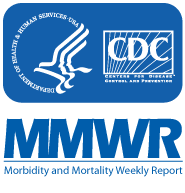Notes from the Field: Acute Muscular Sarcocystosis Among Returning Travelers — Tioman Island, Malaysia, 2011
Notes from the Field: Acute Muscular Sarcocystosis Among Returning Travelers — Tioman Island, Malaysia, 2011Weekly
January 20, 2012 / 61(02);37-38
GeoSentinel (the surveillance program of the International Society of Travel Medicine and CDC) has identified 32 cases of suspected acute muscular sarcocystosis in travelers returning from Tioman Island off the east coast of peninsular Malaysia. All the patients traveled to Tioman Island during the summer of 2011. Within days or weeks of returning home, all experienced fever and muscle pain, often severe and prolonged. All had peripheral eosinophilia, and most had elevated serum creatinine phosphokinase levels. Most were tested for acute trichinosis and toxoplasmosis by serology, and all of these tests were negative.
Approximately half of the patients were identified in Germany; others were reported elsewhere in Europe, and in North America and Asia. Muscle biopsy from two patients demonstrated organisms consistent with sarcocystosis, one from a group of five ill travelers and one from a group of three.
Sarcocystis spp. are intracellular protozoan parasites.* Humans are the definitive host for Sarcocystis hominis and Sarcocystis suihominis, acquired by eating undercooked sarcocyst-containing beef or pork, respectively. The parasites reproduce sexually in the human intestine, where infection can cause acute gastroenteritis; however, most S. hominis and S. suihominis infections are thought to be asymptomatic (1).
Although the specific species have never been identified, humans can become intermediate hosts for at least some of the 130 Sarcocystis spp. that are transmitted between predator and prey in nature. In these cases, humans ingest oocysts or sporocysts in food or water contaminated with feces from an infected predator animal. Nonspecific symptoms might arise during the reproductive and migratory phase of the parasite within the vascular endothelium. The parasite ultimately disseminates to skeletal, cardiac, and smooth muscle, where it forms sarcocysts containing large numbers of parasites that are infectious for a definitive host. Sarcocyst formation can provoke eosinophilic myositis, as occurred in this outbreak. No proven treatment exists for human muscular sarcocystosis, but in all previously reported cases, symptoms resolved over weeks to months.
Fewer than 100 cases of human muscular sarcocystosis have been reported in the literature, with most discovered incidentally in asymptomatic persons (1). The largest previous outbreak affected seven of 15 U.S. servicemen on maneuvers in a Malaysian jungle (2). All but one of the seven had symptoms, and four had eosinophilic myositis, one of whom was confirmed to have sarcocysts in his muscle. Human sarcocystosis is prevalent in Malaysia; a study of tissue from 100 consecutive autopsies found sarcocysts in 21% (3). A seroprevalence study found evidence of infection in 20% of 243 Malaysians (4).
GeoSentinel† and EuroTravNet,§ assisted by CDC, have initiated an epidemiologic investigation to document demographic, travel, clinical, and exposure data for these patients. Histologic examination and DNA amplification will be performed on existing muscle biopsy specimens to confirm the diagnosis of muscular sarcocystosis in individual patients and to identify the responsible Sarcocystis spp. Updates on the investigation are being provided to public health authorities in Malaysia and countries where patients have been identified. On December 6, 2011, CDC posted an outbreak notice for sarcocystosis in Malaysia that included recommendations for safe food and water consumption and proper hygiene¶; travelers to Malaysia are encouraged to follow these recommendations. Public health agencies and practicing clinicians who are aware of persons with prominent musculoskeletal complaints (e.g., myalgia or arthralgia) with eosinophilia, negative trichinosis, and recent travel to Tioman Island are encouraged to report them to the corresponding contributor of this report.
Reported by
Frank von Sonnenburg, MD, Dept of Infectious Disease and Tropical Medicine, Univ of Munich; Jakob P. Cramer, MD, Bernhard-Nocht Clinic for Tropical Medicine, Univ Medical Center Hamburg-Eppendorf, Hamburg, Germany. David O. Freedman, MD, D. Adam Plier, GeoSentinel Program Office, Univ of Alabama at Birmingham. Douglas H. Esposito, MD, Mark J. Sotir, PhD, Div Global Migration and Quarantine, National Center for Emerging and Zoonotic Infectious Diseases; Emily W. Lankau, DVM, EIS Officer, CDC. Corresponding contributor: Douglas H. Esposito, desposito@cdc.gov, 404-639-7795.
Acknowledgments
Martin Grobusch, MD, Center for Tropical and Travel Medicine, Univ of Amsterdam, The Netherlands. Hélène Savini, MD, Service de Pathologies Infectieuses et Tropicales, Hôpital d'Instruction des Armées Laveran, Marseille; Christophe Rapp, MD, Service des Maladies Infectieuses et Tropicales, Hôpital d'Instruction des Armées Bégin, Saint-Mandé; Alice Pérignon, MD, Service des Maladies Infectieuses et Tropicales, Hôpital Pitié-Salpêtrière, Paris, France. Wayne Ghesquiere, MD, Univ of British Columbia, Vancouver, Canada. Federico Gobbi, MD, Centro per le Malattie Tropicali, Ospedale Sacro Cuore-Don Calabria, Negrar (Verona), Italy. Philipp Zanger, MD, Institut für Tropenmedizin, Tübingen, Germany. Ronald Fayer, PhD, Benjamin M. Rosenthal, PhD, US Dept of Agriculture, Beltsville, MD. Alexandre J. da Silva, DsC, Patricia P. Wilkins, PhD, Div Parasitic Diseases and Malaria, Center for Global Health; Gary W. Brunette, MD, Clive M. Brown, MD, Martin S. Cetron, MD, Div Global Migration and Quarantine, National Center for Emerging and Zoonotic Infectious Diseases, CDC.
References
1.Fayer R. Sarcocystis spp. in human infections. Clin Microbiol Rev 2004;17:894–902.
2.Arness MK, Brown JD, Dubey JP, Neafie RC, Granstrom DE. An outbreak of acute eosinophilic myositis attributed to human Sarcocystis parasitism. Am J Trop Med Hyg 1999;61:548–53.
3.Wong, KT, Pathmanathan R. High prevalence of human skeletal muscle sarcocystosis in south-east Asia. Trans R Soc Trop Med Hyg 1992;86:631–2.
4.Thomas V, Dissanaike AS. Antibodies to Sarcocystis in Malaysians. Trans R Soc Trop Med Hyg 1978;72:303–6.
* Additional information available at http://dpd.cdc.gov/dpdx/html/imagelibrary/s-z/sarcocystosis/body_sarcocystosis_il5.htm.
† Additional information available at http://www.istm.org/geosentinel/main.html.
§ Additional information available at http://www.istm.org/eurotravnet/main.html.
¶ Additional information available at http://wwwnc.cdc.gov/travel/notices/outbreak-notice/sarcocystosis-malaysia.htm.
Suscribirse a:
Enviar comentarios (Atom)























.png)











No hay comentarios:
Publicar un comentario